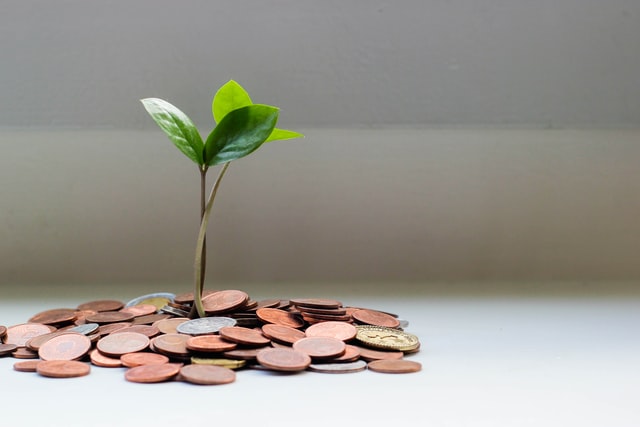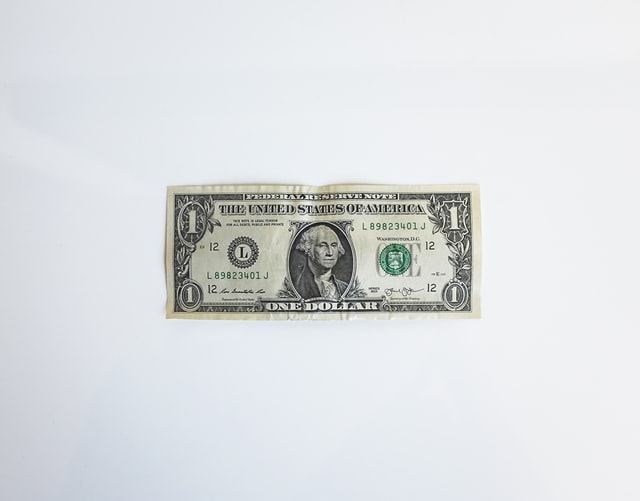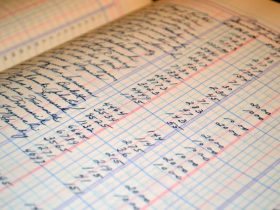Currency fluctuations are a natural outcome of floating exchange rates, the norm for most major economies. Numerous factors influence exchange rates, including a country’s economic performance, the outlook for inflation, interest rate differentials, capital flows, etc. A currency’s exchange rate is typically determined by the strength or weakness of the underlying economy. As such, a currency’s value can fluctuate from one moment to the next.
Table of Contents
Key Takeaways
Currency exchange rates can impact merchandise trade, economic growth, capital flows, inflation, and interest rates.
Examples of significant currency moves impacting financial markets include the Asian Financial Crisis and the Japanese yen carrying trade unwinding.
Investors can benefit from a weak greenback by investing in overseas equities. A weaker dollar can boost their returns in U.S. dollar terms.
Investors should hedge their foreign currency risk via instruments such as futures, forwards, and options.
Far-Reaching Currency Impacts
Many people ignore exchange rates because rarely do they need to. The typical person’s daily life is conducted in their domestic currency. Exchange rates only come into focus for occasional transactions, such as foreign travel, import payments, or overseas remittances.
An international traveler might harbor for a robust domestic currency because that would make travel to Europe inexpensive. But the downside is that a strong currency can significantly drag the economy over the long term, as entire industries are rendered noncompetitive and thousands of jobs are lost. So while some might prefer a strong currency, a weak currency can result in more economic benefits.
The value of the domestic currency in the foreign exchange market is a crucial consideration for central banks when they set monetary policy. Directly or indirectly, currency levels may play a role in the interest rate you pay on your mortgage, the returns on your investment portfolio, and the price of groceries at your local supermarket, and even your job prospects.

Currency Impact on the Economy
A currency’s level directly impacts the economy in the following ways:
Merchandise Trade
It refers to a nation’s imports and exports. In general, a weaker currency makes imports more expensive while stimulating exports by making them cheaper for overseas customers to buy. As a result, a weak or strong currency can contribute to a nation’s trade deficit or trade surplus over time.
For example, assume you are a U.S. exporter who sells widgets at $10 each to a buyer in Europe. The exchange rate is €1=$1.25. Therefore, the cost to your European buyer is €8 per widget.
Now let’s say the dollar weakens and the exchange rate is €1=$1.35. Your buyer wants to negotiate a better price, and you can afford to give them a break while still clearing at least $10 per widget. Even if you set the new price at €7.50 per widget, which is a 6.25% discount from your buyer’s perspective, your worth in dollars is $10.13 at the current exchange rate. A weak U.S. dollar allows your export business to remain competitive in international markets.
Conversely, a stronger currency can reduce export competitiveness and make imports cheaper, which can cause the trade deficit to widen further, eventually weakening the money in a self-adjusting mechanism. But before this happens, export-dependent industries can be damaged by an unduly strong currency.
Economic Growth
The basic formula for an economy’s GDP is:
\begin{aligned} &GDP= C + I + G + (X-M)\\ &\textbf{where:}\\ &\begin{aligned} C = &\text{ Consumption or consumer spending, the biggest}\\ &\text{ component of an economy}\end{aligned}\\ &I = \text{Capital investment by businesses and households}\\ &G = \text{Government spending}\\ &(X-M) = \text{Exports}- \text{Imports, or net exports}\\ \end{aligned}
GDP=C+I+G+(X−M)where:
C= Consumption or consumer spending, the biggest
Component of an economy
I=Capital investment by businesses and households
G=Government spending
(X−M)=Exports−Imports, or net exports
This equation shows that the higher the value of net exports, the higher a nation’s GDP. However, as discussed earlier, net exports have an inverse correlation with the strength of the domestic currency.
Capital Flows
Foreign capital tends to flow into countries that have strong governments, dynamic economies, and stable currencies. A nation needs relatively stable money to attract capital from foreign investors. Otherwise, the prospect of exchange-rate losses inflicted by currency depreciation may deter overseas investors.
There are two types of capital flows: foreign direct investment (FDI), in which foreign investors take stakes in existing companies or build new facilities in the recipient market; and foreign portfolio investment, in which foreign investors buy, sell and trade securities in the recipient market. FDI is a critical funding source for growing economies such as China and India.
Governments generally prefer FDI to foreign portfolio investments because the latter is hot money that can leave the country quickly when conditions grow tough. This capital flight can be sparked by any adverse event, such as a devaluation of the currency.
Inflation
A devalued currency can result in “imported” inflation for countries that are substantial importers. For example, a sudden 20% decline in the domestic currency could result in imports costing 25% more, as a 20% decline means a 25% increase is needed to get back to the original price point.
Interest Rates
As mentioned earlier, currency fluctuations exchange rates are a crucial consideration for most central banks when setting monetary policy. For example, in September 2012, Bank of Canada governor Mark Carney said the bank took the persistent strength of the Canadian dollar into account when setting monetary policy. Carney said the Canadian dollar’s strength was one reason why his country’s monetary policy had been “exceptionally accommodative” for so long.
A robust domestic currency exerts a drag on the economy, achieving the same result as a tighter monetary policy higher interest rates). In addition, further tightening of monetary policy when the domestic currency is already strong may exacerbate the problem by attracting hot money from foreign investors seeking higher-yielding investments (which would further strengthen the domestic currency).
Global Impact of Currencies: Examples
The foreign market is the most actively traded globally, with an excess of more than $5 trillion traded daily, far exceeding global equities. Despite such enormous trading volumes, currencies usually stay off the front pages. However, there are times when currency fluctuations, currencies move dramatically, and the repercussions are felt around the world. We list below a few examples:
The Asian Crisis of 1997-98
A prime example of the havoc caused by adverse currency moves is the Asian Financial Crisis, which began with the devaluation of the Thai baht in the summer of 1997. The devaluation occurred after the baht was under intense speculative attack, forcing Thailand’s central bank to abandon its peg to the U.S. dollar and float the currency. This currency contagion spread to neighboring countries such as Indonesia, Malaysia, and South Korea, leading to a severe contraction in these economies as bankruptcies soared and stock markets plunged.
China’s Undervalued Yuan
Between 1995 and 2005, China held the renminbi steady at about 8.2 per dollar, enabling its export juggernaut to gather steam from what trade partners said was an artificially suppressed and undervalued currency. In 2005, China responded to the growing chorus of complaints from the U.S. and other nations. It allowed the yuan to steadily appreciate, from over 8.2 RMB to the dollar to about 6 per dollar by 2013.3
Japanese Yen’s Gyrations from 2008 to Mid-2013
The Japanese yen was one of the most volatile currencies between 2008 and 2013. Because of Japan’s policy of near zero-bound interest rates, traders favored the yen for carrying trades. As a result, they borrowed yen for next to nothing and invested in higher-yielding overseas assets. But as the global credit crunch intensified in 2008, the yen began appreciating sharply as panicked investors bought the currency in droves to repay yen-denominated loans.
As a result, the yen appreciated by more than 25% against the U.S. dollar in the five months to January 2009. Then in 2013, Prime Minister Shinzo Abe unveiled monetary stimulus and fiscal stimulus plans (nicknamed “Abenomics”) that led to a 16% plunge in the yen within the first five months of the year.
Euro Fears (2010-12)
Concerns that the profoundly indebted nations of Greece, Portugal, Spain, and Italy would be forced out of the European Union led the euro to plunge 20% from 1.51 to the dollar in December 2009 to about 1.19 in June 2010. The euro recovered its strength over the next year, but that only proved temporary. A resurgence of EU break-up fears led to a 19% slump in the euro from May 2011 to July 2012.
How Can an Investor Benefit?
Here are some suggestions to benefit from currency moves:
Invest Overseas
US-based investors who believe the greenback is weakening should invest in solid overseas markets currency fluctuations because foreign currency gains will boost your returns. For example, consider the Canadian S&P/TSX Composite Index between 2000 and 2010. The S&P 500 Index was virtually flat over this period, yet the TSX generated about 72% returns in Canadian dollar terms. For U.S. investors buying Canadian equities with greenbacks, U.S. dollar returns were nearly 137%, or 9% per annum, due to the steep appreciation of the Canadian dollar.
Invest in U.S. Multinationals
The U.S. has many large multinational companies that derive substantial revenues and earnings from foreign countries. Earnings of U.S. multinationals are boosted by the weaker dollar, which should translate into higher stock prices when the greenback is weak.
Refrain From Borrowing in Low-Interest Foreign Currencies
It has admittedly not been a pressing issue since 2000, as U.S. interest rates have been at record lows for years. However, at some point, they will rise again. When that happens, investors who are tempted to borrow in foreign currencies at lower interest rates should remember those who had to scramble to repay borrowed yen in 2008. The moral of the story: currency fluctuations never borrow in a foreign currency if it is liable to appreciate and you do not understand or cannot hedge the exchange risk.
Hedge Currency Risk
Adverse currency moves can significantly impact your finances, especially if you have substantial exposure. But there are plenty of choices to hedge currency fluctuations, currency risks, such as currency futures, currency forwards, currency options, and exchange-traded funds such as the Invesco Euro Currency Shares Euro Trust (FXE) and Invesco Currency Shares Japanese Yen Trust (FXY). Consider these options if you like to sleep at night.
The Bottom Line
Currency fluctuations moves can have a wide-ranging impact on a domestic economy and globally as well. When the greenback is weak, investors can take advantage by investing overseas or in U.S. multinationals. Because currency moves can be an entire risk when one has significant exposure, it may be best to hedge this risk through the many hedging instruments available.










Leave a Reply